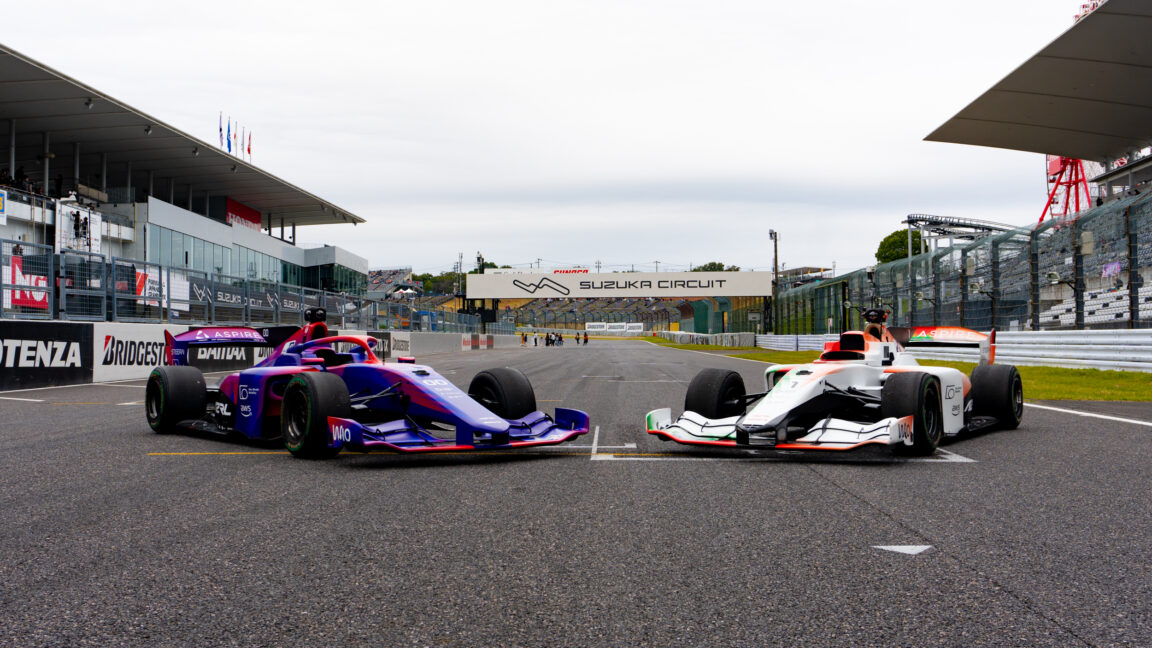Fashion
Explainer: Using shared risk to revolutionise fashion’s supply chain

A report titled ‘Under the Banyan Tree: Buyers and Suppliers in Fashion,‘ which was produced by the International Apparel Federation (IAF) in collaboration with the International Trade Centre (ITC), asserts there is an alternative to the price-based and transactional bargaining that has traditionally dominated the buyer/supplier relationship.
The whitepaper, which was written by Chainge Capital’s chairman John S. Thorbeck suggests a shared risk model could have a three-fold benefit for both fashion manufacturers and buyers:
- It unlocks financial capital from excess production and unneeded inventory in the upstream (“first mile”) supply chain
- It activates standard processes and levers for supply flexibility with new data science tools for buyers and suppliers
- It accelerates investment in sustainable fashion products and practices via total capital productivity.
The importance of shared purpose, risk and value together
Thorbeck explains that shared risk is a strategy applied to supply chain performance across network boundaries and company silos. Meanwhile, shared value is a powerful financial concept adopted in corporate strategy and communication. Finally, shared purpose is a uniting organisational force to overcome obstacles to market and social value.
In a trinity of alignment, he says each is an essential insight for achieving a
new business model in fashion.
What is the shared risk business model?
Shared risk is designed for economics of mutuality between fashion buyers and suppliers. It recognises inventory and sustainability as inseparable challenges, each competing for scarce capital. The obstacle to essential investment in sustainable and equitable fashion is excess production and inventory.
How to use the model in practice to make change happen
Access the most comprehensive Company Profiles
on the market, powered by GlobalData. Save hours of research. Gain competitive edge.

Company Profile – free
sample
Your download email will arrive shortly
We are confident about the
unique
quality of our Company Profiles. However, we want you to make the most
beneficial
decision for your business, so we offer a free sample that you can download by
submitting the below form
By GlobalData
Shared purpose: Process innovation to improve profitability, sustainability and worker well-being.
End-to-end metrics: System measures to integrate supply flexibility and manufacturing value.
The first mile: Upstream levers unlock inventory capital. Untapped first versus last mile economics are significant.
Financial capital: Stanford-based model quantifies potential to improve retailer market capitalisation by 30 to 40%.
Lead time optimisation: Orchestrate capacity, material, production and transportation for total profit at far less risk
Data science tools: Multi-stage decision support to enable and co-manage levers for shared risk and value.
He pointed out the result the fashion sector seeks is to operate with less inventory yet have higher profit performance, before adding the report offered a way to recruit companies and individuals who could deliver the applications and tools needed to make shared risk a reality.
Thorbeck continued “It’s been a journey with individuals who want to make a difference.”
Case studies: Shared risk in practice within the fashion supply chain
Thorbeck’s report features several case studies with a powerful coalition of solutions for making the shared risk model a reality. He explains the technology each uses “illuminates how the challenge of increasing sustainability and profitability can succeed across new ventures, large retailers and global suppliers”.
Here are just two of the case studies outlined in the report that demonstrate how a shared risk model can work in practice.
Case study: How to redefine sources of value upstream
Challenge: How does inventory postponement generate or minimise internal capital for new brands and their supplier partners? How does operational innovation define a supplier relationship over price alone?
Aslaug Magnusdottir, the CEO and founder of Icelandic fashion brand, Katla, combines sustainable fashion design and materials with zero inventory and
waste. The business is financed with limited equity and external capital.
A similar systems approach is deployed by Caroline Gogolak, who founded streetwear fashion brand Saint Art. She exploits design trends with small batch manufacturing to minimise risks of capital and inventory.
Thorbeck notes both Katla and Saint Art operate with very low working capital requirements based on their strategies to be trend-right and responsive without holding inventory.
He says their system to minimise risk is a brand message alongside proprietary materials such as cotton/seaweed blends (Katla) and vegan leather (Saint Art).
Product designs with organic, fully utilised materials are produced in small batch, rapid cycles with manufacturers committed to the same principles. The look and make are inseparable and, together, represent brand identity for zero waste and minimal inventory. It is sustainable fashion enabled by neutral or negative working capital.
A third entrepreneur, Shelly Xu the founder of zero waste fashion company SXD, applies machine learning to scale her efficient designs, reduce fabric use and extend a garment’s life. Xu’s venture focuses on “beauty under constraint” and uses deadstock as its start point.
Thorbeck highlights fashion’s deadstock challenge is largely hidden and under-reported, if at all, as illustrated by a global manufacturer’s average generation of 150,000 pounds of unused fabric per month.
SXD’s AI designs with no leftover fabric, empowering designers to be
responsible for unused material that no longer needs to be scrapped or salvaged as a cost of doing business. SXD’s insight is that upstream design for circularity eliminates a post-production burden for retailers, brands and consumers.
According to Xu, “results thus far have exceeded brand goals to improve fabric yield by 46%, translating to up to 55% reduction in cost of goods sold (COGS)”.
Thorbeck reveals all three of these entrepreneurs are gaining traction and are proving market viability by re-defining upstream sources of value in global retailing. He regards each of them as an inspiration to entrepreneurs everywhere, especially women who share convictions that fashion is both empowering as a personal identity and as an economic advancement.
He states: “Responsible, sustainable brand practices are meaningful to rising entrepreneurs and their customers.”
Application: Working capital, or cash from operations, is an often overlooked source of value. Minimising costs for fabric deadstock and finished goods inventory helps to accelerate cycles of orders and payments. Financial velocity, or efficiency, is a significant benefit to buyers and suppliers.
Case study: Production in China as upstream agility replaces lowest cost with service
Challenge: For small to mid-sized factories, how does postponement enhance retail order and payment cycles to service high levels of finished goods?
Hong Kong-based supply chain solutions provider Lever Style acquires orders from brands and retailers in Asia and contracts them with a network of collaborating factories. It chooses categories that fit a direct-to-consumer (DTC) production model. This means it offers smaller order batches for customers with closer collaboration in material, design and sales.
Thorbeck explains Lever Style has thrived by deciding to compete on specialised production services as opposed to the price and volume terms dictated by large buyers.
The company’s CEO Stanley Szeto led its initial Public Offering (IPO) in 2019 based on the success of its strategy with Lever Style openly rejecting manufacturing as a commodity that is vulnerable to seasonal, short-term contracts and relationships.
Lever Style works on the premise that it eliminates fashion risk by adapting to order flows in small batches, rapid replenishment, and sharp prices that are pre-determined by order. In return for such responsiveness, it is paid promptly for its deliveries in just 15 days.
Merchandise planning is virtually non-existent and production is placed in response to closely monitored demand.
Szeto explains: “Postponement reduces our clients’ inventory risk and working capital needs, improving our competitive positioning. Postponement is perhaps our singular most important corporate initiative. We are developing tools and solutions that allow that to happen at scale.”
Application: Upstream agility helps retailers generate higher value by aligning
inventory, service and capital demands. Close collaboration requires empathy with customers to exploit smaller batch, more frequent production cycles to chase sales trends.
Overcoming the challenges and what’s next?
Thorbeck points out ‘Under the Banyan Tree‘ was conceived and commissioned to articulate an alternative approach to the fashion industry’s overreliance on lowest cost global sourcing.
He asks: “Are we able to reimagine a future that equitably serves consumers, workers, investors and society?” before quickly responding: “Fortunately, capabilities for reinvention match convictions by fashion leaders and entrepreneurs, demonstrating breakaway from adversarial culture to shared purpose and performance.”
He suggests a better way and world is the answer that young and emerging consumers want to hear and it is the identity of their generation worldwide so investors should heed their demands.
The complex, globalised and fragmented system in which fashion operates means alternative ways of business must be economic, technological and social in equal parts and in all tiers of the supply chain.
There is already lots of inspiration for transformation. In retailing, for example the time machine of the future has arrived and favours no geography or incumbent.
The new world of commerce is being energised by apps and phones, digital payments, short-form media, and rapid trend cycles.
These changes will craft supply chains for agility and sustainability, suggests Thorbeck.
Plus, he says technology designed for risk, responsiveness and responsibility supersede product systems and relationships based on locations, cost and control.
He concludes: “As consumer economies mature in the US and Europe, and emerge in China and India, a new narrative redefines globalisation that is no longer East versus West, or North versus South.
“Perhaps no industry is more representative of promise than fashion, proving its ability to restore itself as a dynamic engine of productivity and prosperity.”











